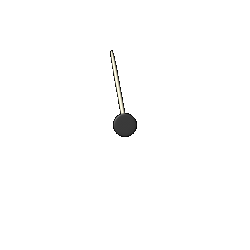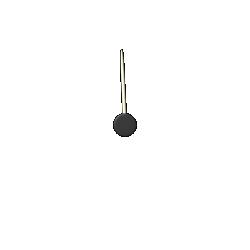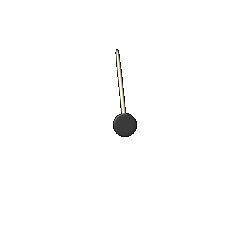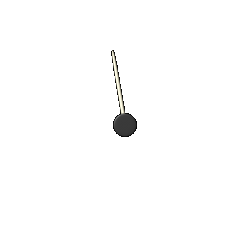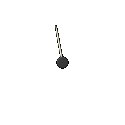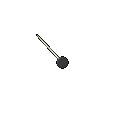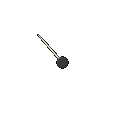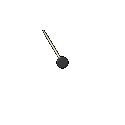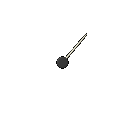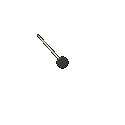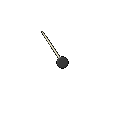GRIDWATCH™
"
Gridwatch" is a registered trademark of Templar Consultancy Limited:
Use by other organisations is strictly prohibited without prior consent
Demand: This is the total demand of the entire country (but not plus exports)
less any
unmetered generating sources like wind but including an
estimate for solar.
The amber warning represents the demand level that cannot be reliably met by wood or fossil burning and nuclear generation, but must be augmented by imports, or unreliable intermittent 'renewable' energy.
Demand 30.35GW
Frequency: Grid frequency is controlled to be exactly 50Hz on average, but varies slightly. A lower frequency corresponds to a higher potential demand than actual generating capacity: by allowing the frequency and voltage to go lower, the demand is reduced slightly to keep the balance, and vice versa.
Frequency 49.970Hz
CCGT: Combined Cycle Gas Turbines are gas turbines whose hot exhausts are used to drive a boiler and steam turbine. This two stage process makes them very efficient in gas usage. They are also quite fast to get online - less than an hour in general, so they are used to cover (profitable) peak demand and to balance wind output.
CCGT 13.90GW
(45.80%)
Wind: This is the total contributed by metered wind farms. Wind power contributes about another 30% from embedded (or unmetered) wind turbines that shows only as a drop in demand. Wind like nuclear, will sell into any market price because turbines are expensive, wind is not and subsidies are always paid. The variability of wind leads to very high fluctuations in output.
Wind 7.71GW
(25.40%)
Nuclear: Currently the UK has seven AGR designs and one relatively modern PWR. Nuclear power stations are run flat-out to maximise income. Since the cost of fuel is almost insignificant, it pays them to sell at any price they can get. Variations in output are generally signs that refuelling or maintenance is ongoing.
Nuclear 3.61GW
(11.89%)
French Interconnectors: These are a 2GW and two 1GW bi-directional link to France which are able to import up to 4GW of power from France - usually in summer when France has a nuclear power surplus - and export in winter, when the UK's excess of backup plant and coal power can be profitably sold to meet continental shortfalls.
French ICTs -0.94GW
(-3.10%)
BritNed Interconnector: This is a 1GW connector to Holland. Its usage seems to reflect a surplus or a deficit of NW europe wind energy.
Dutch ICT -1.02GW
(-3.36%)
Moyle interconector.: This is a 500MW (0.5GW) bi-directional link from Scotland to N Ireland. Normally used to import cheaper electricity to Ireland, but sometimes reverses when demand is high, as Ireland has a good installed base of gas turbine power stations.
Irish ICT 0.20GW
(0.66%)
East-West Interconnector: This is a new 500MW (0.5GW) bi-directional link between Wales and the Irish Republic, enabling access to the UK (and continental) grid, and prices, for the Irish consumers. On 8 September 2016, the interconnector developed a fault. The interconnector re-entered service on the 20 December 2016 with a fully rated 500 MW import, however exports to the UK are still limited to roughly 280MW
E-W ICT 0.20GW
(0.66%)
NEMO Interconnector: This is a new 1GW connector to Belgium. Its usage seems to reflect a surplus or a deficit of NW europe wind energy.
Nemo ICT -0.97GW
(-3.20%)
NSL Interconnector: This is a 1.4GW connector to Norway. It is used to balance UK windpower with Norwegian hydropower.
Norway ICT 0.82GW
(2.70%)
Viking Interconnector: This is a new 1.4GW connector to Denmark. It is used to balance UK windpower with Scandinavian hydropower and Danish wind.
Viking ICT -1.09GW
(-3.59%)
Pumped Storage: These are small hydro-electric stations that can use overnight electricity to recharge their reservoirs. Mainly used to meet very short term peak demands (the water soon runs out). They represent the nearest thing to 'storage' that is attached to the grid.
Pumped 0.00GW
(0.00%)
Hydroelectric power: The UK has no major hydroelectric power stations, but a collection of smaller ones, mainly in Scotland, that provide very useful power (if it's rained recently!). There would be a little more, but many stations deliberately reduce output to get the best renewable subsidy rates.
Hydro 0.48GW
(1.58%)
Biomass: These power stations are either (parts of) old coal plants that have been converted to run on imported timber - e.g. Drax 2 - thus enabling them to qualify as 'renewable' and gain subsidies thereby, or purpose built biomass burners like Stevens Croft (40MW) built to use sawmill waste.
Biomass 2.90GW
(9.55%)
Solar PV: 
As no solar PV to date is metered centrally, we cannot show accurate real time figures on solar PV power.
Estimated power (data provided by
Sheffield University) is shown here. There is good evidence from the lack of decrease in recorded demand at midday to suppose this is somewhat overestimated, however.
Solar 0.00GW
(0.00%)
Coal: Coal is no longer the largest contributor to the UK grid as gas prices are currently low, and legislation has forced closure of most plants. Drax also co-fires biomass with coal, which allows them to gain access to renewable subsidies. Coal plants are now restricted in running hours for emissions, so tend to run only in winter, when prices are higher.
Coal 0.00GW
(0.00%)
OCGT: Open Cycle Gas Turbines, are gas turbines without steam plant to maximise their efficiency. They are cheap to build, but expensive to run, so are seldom used except in emergencies in winter, when very high market prices of electricity make them profitable.
OCGT 0.01GW
(0.03%)
Other Generators: This category is a catch all for other centrally metered genrators connected to the National Grid.
Other 0.32GW
(1.05%)
Daily Demand (GW)
Weekly Demand (GW)
Monthly Demand (GW)
Yearly Demand (GW)
Daily Nuclear/Coal/CCGT/Wind (GW)
Weekly Nuclear/Coal/CCGT/Wind (GW)
Monthly Nuclear/Coal/CCGT/Wind (GW)
Yearly Nuclear/Coal/CCGT/Wind (GW)
Daily Hydro/Pumped/Bio/Solar (GW)
Weekly Hydro/Pumped/Bio/Solar (GW)
Monthly Hydro/Pumped/Bio/Solar (GW)
Yearly Hydro/Pumped/Bio/Solar (GW)
Daily French/Irish/Dutch/EW/BE/NSL ICT (GW)
Weekly French/Irish/Dutch/EW/BE/NSL ICT (GW)
Monthly French/Irish/Dutch/EW/BE/NSL ICT (GW)
Yearly French/Irish/Dutch/EW/BE/NSL ICT (GW)
All data is in GMT except this information, which is in local time for user convenience:
Data last recorded on
Wednesday the 17th. of December, 2025 at 05:50 GMT
Please Help Gridwatch: If you have found this site useful, please help by donating to it.
Download Archived data:
Links to other energy sites and blogs: Further research areas for those interested in energy production and performance
About this site: More information on the gridwatch site
Information about user numbers and bandwidth: enjoy
!Exelon website is currently down.
Gridwatch is therefore not reporting up to date data!
!Sheffield University is currently not supplying accurate real time information on Solar power.
Gridwatch is therefore not reporting up to date data!
